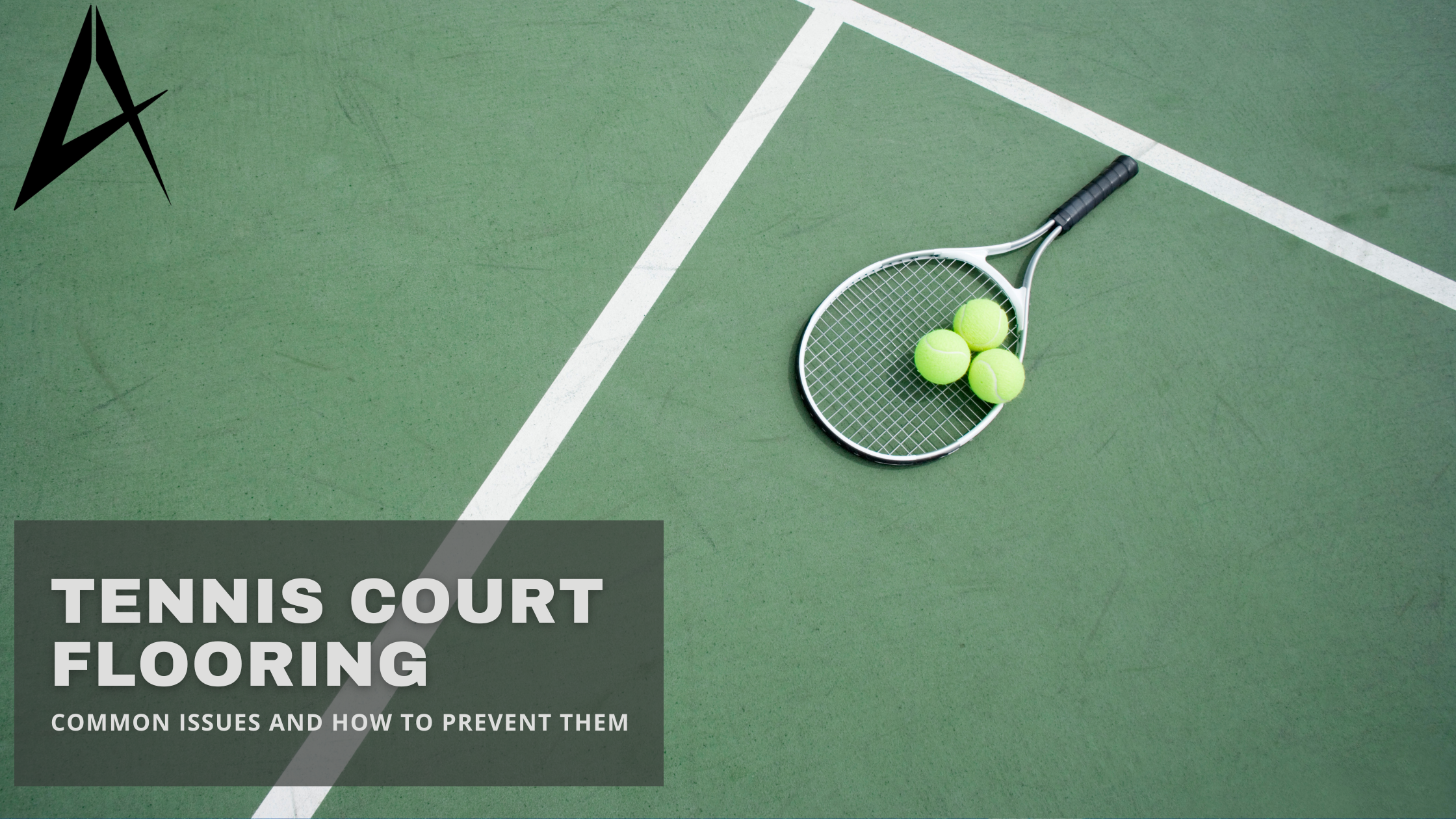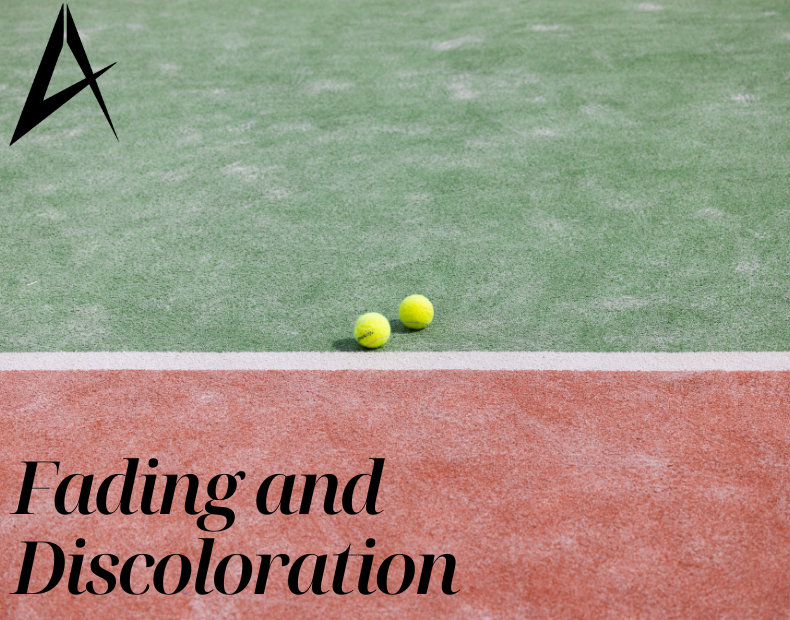
Introduction
A well looked after tennis court is essential for playability, safety and longevity. Many court owners face tennis court flooring issues due to poor installation, poor quality materials or lack of maintenance. At AAL we specialise in acrylic synthetic flooring for outdoor tennis courts flooring, durability, flexibility and a flawless playing surface.
Tennis courts are exposed to harsh weather, heavy foot traffic and the stress of intense play. If not maintained properly they can develop structural issues that not only affect performance but also require expensive repairs. Knowing the common problems and how to prevent them will save you time and money and ensure players have the best experience.
In this guide we will discuss common tennis court flooring issues and how to prevent them so your court stays in top condition for years to come.
1. Cracks and Surface Damage
Problem:
Over time cracks and surface deterioration occur due to weather exposure, heavy foot traffic and poor sub base preparation. Cracks affect play and need costly repairs.
Cracks are the most common one in tennis court flooring issues. They are caused by the expansion and contraction of the surface due to temperature fluctuations. Poor quality sub base preparation and aging materials contribute to the problem. If left unaddressed cracks will get wider and you’ll have an uneven playing surface and potential injuries to players.
Solution:
Work with experienced tennis court contractors who will ensure proper sub base preparation. Regular inspections and timely crack sealing will stop further deterioration. High quality acrylic coatings from AAL will enhance durability and protect against wear and tear. A well constructed subbase with proper drainage will minimize the chance of cracks appearing in the first place.
Also resurfacing the court with a premium acrylic coating will maintain the structural integrity of the court. Using flexible crack resistant coatings will further extend the life of your court.
2. Poor Drainage Resulting in Water Collection
Problem:
Standing water on the court surface brings about surface deterioration, algae growth and slippery surface, putting players at higher risks of injury.
Poorly constructed drainage may lead to standing water that destroys the surface of the court. Water collection accelerates deterioration of the peeling, bubbling and mold growth on the acrylic layer. Excessive moisture can further penetrate into the foundation making future repairs even more costly.
Solution:
Have your tennis court measured and designed properly to ensure proper drainage. Engage tennis court builders near me who understand proper drainage installation. Daily maintenance such as cleaning debris in drains will also help avoid water buildup. Allowing a permeable surface or grading the slope of the court can also avert water puddling.
3. Fading and Discoloration

Problem:
Continuous exposure to the sun and extreme weather conditions leads to the fading of the court surface and makes it appear old and unsightly.
Tennis courts are constantly exposed to UV rays, and with time, it leads to color fading. A faded surface not only lowers the visual attractiveness of the court but also impacts playability. Sun damage can also render the surface brittle leading to further degradation.
Solution:
Use UV resistant acrylic color coatings from reputable tennis court installation companies near me such as AAL. Regular resurfacing with good quality materials will keep color intensity and improve court look. Select a dark color for your court to keep it looking newer longer.
4. Slippery Court Surface
Problem:
A slippery court surface diminishes traction impacting player performance and safety. This tends to occur when dirt builds up, coatings degrade or acrylic is installed incorrectly.
Slippery courts are a big worry for amateur and professional players alike. Absence of grip heightens the risk of falls and injuries, impacts gameplay.
Solution:
Select tennis court resurfacing company that use textured acrylic coatings for slip and grip resistance. Cleaning regularly and regular resurfacing will keep the playing surface safe. Pressure wash the surface and coat with anti-slip coatings to add extra traction.
5. Peeling or Bubbling of Acrylic Coatings
Problem:
Poor application, water trapped under the surface or low quality material can lead to the peeling or bubbling of the acrylic layer.
Peeling and bubbling happens if there is poor adhesion among layers, normally due to water retention or inferior materials. This leads to a rough surface that shortens the life of the court.
Solution:
Always work with builders of tennis courts who employ AAL high quality acrylic. Ensure to prepare the surface and dry it prior to the application of coatings to avoid issues of moisture.
6. Inconsistent Ball Bounce Due to Uneven Surface
Problem:
Uneven surfaces can be caused by poor construction, shifting foundations or resurfacing mistakes and affect playability.
A tennis court should have a flat, even surface to allow for consistent ball bounce. Any unevenness in the surface makes it hard for players to predict the ball movement.
Solution:
Partner with professional tennis court contractors near me who know how to build the base correctly. Regular inspections and resurfacing by tennis court construction companies near me will keep the surface even. Fill in the low spots and level the court surface regularly.
7. High Repair Costs Due to lack of attention
Problem:
Ignoring minor repairs can lead to significant damage and increased maintenance costs over time.
A small crack or a small peel may seem insignificant but over time these small issues can become big problems.
Solution:
Regular inspections and preventive maintenance by tennis court repair near me professionals will save you money in the long run. Investing in premium materials from AAL means long term performance. Clean regularly and address any signs of damage early on and you will extend the life of your court.
8. High Cost of Tennis Court Installation and Maintenance
Problem:
Many owners are concerned about the cost to build a tennis court in backyard or the cost to install a tennis court which varies based on materials and construction quality.
Solution:
Work with reliable tennis court construction companies near me to get the best value for your money. AAL offers durable, cost effective acrylic flooring solutions that will save you money in the long run with minimal maintenance. Choose high quality materials from the start and you will not need to repair frequently.
Conclusion
Prevention of these typical tennis court flooring issues calls for quality materials, correct installation, and regular maintenance. AAL provides the best-quality acrylic synthetic flooring that improves durability, flexibility, and playability for every outdoor sports court.
For professional guidance, tennis court resurfacing, or new installations, call AAL today! Our experts make sure your tennis court is in top shape, offering a superior playing experience for years to come.
Frequently Asked Questions
Building a tennis court is all about choosing a suitable location, ground preparation, using good quality materials, placing a stable base, installing acrylic flooring and incorporating line markings and fencing.
To avoid cracks, maintain good quality tennis court construction with a strong foundation, apply good quality acrylic coatings and check regularly to seal small cracks before they get bigger.
To keep your tennis court flooring in shape, regularly clean it to get rid of dirt and debris, inspect for cracks or damage, provide good drainage and use acrylic resurfacing when necessary.
The cost depends on flooring material, location and other features such as lighting or fencing. In India, a backyard tennis court build can be priced anywhere between ₹10 lakh to ₹35 lakh depending on the quality of construction and materials used.
Tennis courts should be resurfaced every 5 to 7 years depending on usage and weather.
